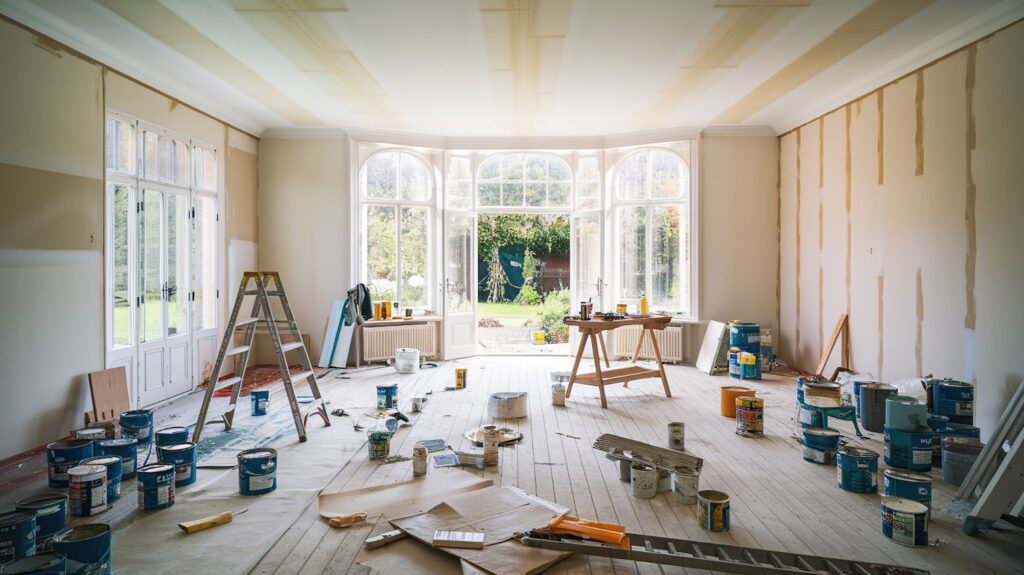
Most renovation stories don’t start with blueprints. They start with friction.The kitchen doesn’t work for how your family actually cooks. The bathroom feels cramped or constantly damp. The basement is wasted space. The deck is undersized or sketchy. The siding looks okay from the street but hides soft spots underneath.
That’s usually when homeowners realize something bigger: choosing the right home renovation contractor matters more than any single material or trendy finish.
A serious renovation isn’t just installing nicer finishes. It’s understanding how every change connects to structure, moisture, electrical, airflow, safety, and daily life. A good contractor sees your home as a system. A weak one just sees surfaces.
What A True Home Renovation Contractor Actually Does
On paper, lots of companies “do” kitchens, baths, decks, basements, and siding. In reality, only some of them integrate those projects into a durable, code-compliant, long-term solution.
A real renovation contractor:
- Evaluates existing conditions instead of guessing.
- Opens what needs to be opened to confirm structure, wiring, plumbing, and moisture.
- Coordinates trades so work is sequenced correctly.
- Balances aesthetics with building science and safety.
- Plans for how the home should perform over 10–20+ years, not just how it looks on reveal day.
You’re not just hiring someone who can swing a hammer. You’re hiring someone who knows when not to.
How To Pre-Qualify Contractors Before They Touch Your Home
You can filter out most of the wrong fits by listening to how they talk about your project.
Green flags:
- Clear explanation of process, not just price.
- Specifics about demolition, prep, protection, and cleanup.
- Discussion of waterproofing, ventilation, structure, and code.
- Transparency about change orders and how surprises are handled.
Red flags:
- Instant quote with almost no questions or site evaluation.
- One-line scopes like “bathroom remodel – $X.”
- Heavy focus on “fast and cheap” as the main selling point.
- No mention of what happens if hidden damage appears.
Serious contractors ask detailed questions because they’re trying to protect your house and your budget. That’s not upselling, that’s competence.
Kitchens: The Nerve Center Of A Smart Renovation
A kitchen renovation is where bad planning shows up fast. This space handles high use, heat, moisture, and major electrical demand while acting as a hub for daily life.
A thoughtful contractor looks at:
- Layout and circulation so appliances, seating, and walkways work in real life.
- Electrical capacity: dedicated circuits, GFCI protection, layered lighting.
- Ventilation that exhausts outside, not into an attic or wall cavity.
- Structural support under stone tops, islands, or removed walls.
- Storage and workflow that match how you cook, not just how it photographs.
The goal isn’t just a pretty kitchen. It’s a kitchen that feels intuitive, functions safely, and doesn’t hide problems behind fresh cabinets and tile.
Bathrooms: Where Waterproofing Separates Pros From Pretenders
Bathrooms are small, but they expose poor workmanship quickly. Good tile over bad prep is still a failure, it’s just delayed.
A strong renovation contractor will:
- Remove down to sound substrates where needed instead of stacking over guesswork.
- Use proper shower systems and membranes rated for wet areas.
- Get slopes, drain placement, corners, and niches right so water moves out, not in.
- Ventilate to the exterior, properly sized and ducted.
- Choose materials that can handle steam, splashing, and daily use.
If a contractor can’t clearly walk through their waterproofing process step by step, keep looking.
Basements: Adding Living Space Without Locking In Moisture
Finished basements can be incredible: family rooms, offices, gyms, guest suites, media spaces. They can also become expensive mistakes if moisture and structure are ignored.
A responsible contractor:
- Checks for water intrusion, vapor issues, staining, and musty odors.
- Evaluates drainage, gutters, grading, and foundation conditions.
- Designs wall and floor assemblies that won’t trap moisture behind drywall.
- Maintains access to mechanicals, cleanouts, and shutoffs.
- Selects flooring and insulation appropriate for below-grade environments.
A great finished basement feels dry, solid, and comfortable years later, not just immediately after completion.
Decks: Structure First, Lifestyle Second
Decks are often treated like simple carpentry projects. In reality, they’re elevated structures carrying people, furniture, and sometimes full outdoor kitchens.
Quality deck work includes:
- Proper footings sized and set to the correct depth.
- Correct beam, joist, and fastener sizing and spacing.
- Solid flashed ledger connections that don’t rot out the house.
- Guardrails and stairs built to code and built to last.
- A layout that matches how you’ll actually use the space.
If a deck looks good but flexes, wobbles, or is barely attached, it isn’t an upgrade. It’s a liability.
Siding: Protection, Not Just A Color Change
Siding is one of the easiest places for shortcuts because the important details are hidden.
A building-smart contractor treats siding as part of a weather management system:
- Removes existing layers where needed to expose sheathing.
- Repairs soft, rotten, or compromised areas instead of burying them.
- Installs continuous WRB or housewrap as the drainage plane.
- Details flashing at windows, doors, band boards, decks, and roof-to-wall joints.
- Keeps starter strips level and siding properly off soil, concrete, and roofing.
Whether it’s vinyl, fiber cement, or engineered wood, performance depends on the wall system behind it and how faithfully the install follows specifications.
Why Using One Contractor Across Multiple Projects Helps
Homes are ecosystems. Changing one part affects others: structure, moisture paths, airflow, load, and wear patterns.
A renovation contractor who regularly handles interiors and exteriors together is better equipped to:
- Spot conflicts between kitchen, bath, siding, deck, and basement work.
- Sequence projects so you’re not reopening the same areas twice.
- Coordinate structure, waterproofing, insulation, mechanicals, and finishes as a single plan.
- Build toward the long-term performance of the whole house, not just patchwork upgrades.
The benefit for the homeowner is fewer surprises, better durability, and a more coherent result.
Smart Questions To Ask Before You Sign
Good decisions start with better questions. Ask:
- What are the highest-risk parts of this project, and how do you handle them?
- How do you approach demo and prep before installing new finishes?
- What happens if you find structural damage, outdated wiring, or hidden moisture?
- Who supervises the job day to day, and how will we communicate?
- Can you walk me through a recent project similar to mine, step by step?
Strong contractors answer with specifics, not slogans.
Setting Your Renovation Up For Success
You don’t have to be a builder to get a high-caliber result. Focus on a few core principles:
- Think long-term: prioritize safety, function, comfort, and durability.
- Be transparent about your budget so the design and scope are realistic.
- Expect a clear written scope of work, not a vague lump-sum line.
- Choose the contractor who cares as much about framing, waterproofing, ventilation, and code as they do about tile patterns, cabinet colors, and curb appeal.
When you do that, your renovation stops being a gamble. Instead of just “getting updates,” you’re investing in a home that feels better, works smarter, and holds up for the next decade and beyond.
